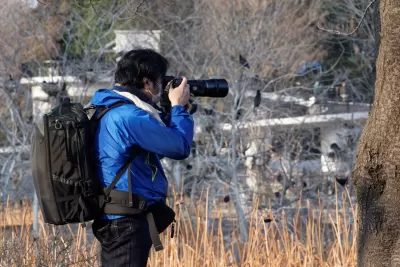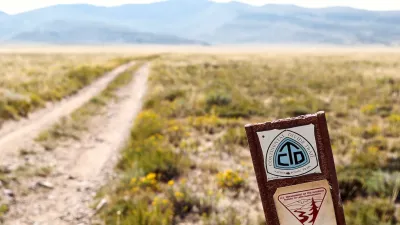Community science mobilizes the public to work alongside scientists to help answer questions about the world. Learn about the valuable contributions of community scientists in Hawai'i.

Community science is essentially science for everyone. Specifically, community science is when the public voluntarily helps conduct scientific research, including designing experiments, collecting data, analyzing results, and solving problems. Community scientists are doing some great work across the country, including the state of Hawai'i.
As Catherine Toth Fox reports, some notable community science projects in Hawai'i have included the state-run Hawaii Ulua and Papio Tagging Project; the annual Kolea Count, run by the Hawaii Audubon Society; and the Sanctuary Ocean Count, which tracks humpback whale migration to the Islands. Currently, University of Hawai'i researchers are asking the public to document extreme water level events, also known as King Tides, this summer starting July 3. The goal of the King Tides Project is to better understand the impacts from sea-level rise and other coastal hazards by looking at these high tides, which will likely be average sea levels in the future.
The King Tides Project started in the summer of 2015, when a few scientists went out with data sheets and took photos of king tides at their favorite coastlines. In the following year, the group recruited the public to assist, offering training workshops to educate volunteers about King Tides and how sea level rise could impact the places they care about. To date, the project has received over 3,800 photos from 484 community scientists on five islands.
To learn more, please read the source article.
FULL STORY: From King Tides To Whale Watching, Community Scientists Keep Research Afloat

Alabama: Trump Terminates Settlements for Black Communities Harmed By Raw Sewage
Trump deemed the landmark civil rights agreement “illegal DEI and environmental justice policy.”

Planetizen Federal Action Tracker
A weekly monitor of how Trump’s orders and actions are impacting planners and planning in America.

The 120 Year Old Tiny Home Villages That Sheltered San Francisco’s Earthquake Refugees
More than a century ago, San Francisco mobilized to house thousands of residents displaced by the 1906 earthquake. Could their strategy offer a model for the present?

Ken Jennings Launches Transit Web Series
The Jeopardy champ wants you to ride public transit.

BLM To Rescind Public Lands Rule
The change will downgrade conservation, once again putting federal land at risk for mining and other extractive uses.

Indy Neighborhood Group Builds Temporary Multi-Use Path
Community members, aided in part by funding from the city, repurposed a vehicle lane to create a protected bike and pedestrian path for the summer season.
Urban Design for Planners 1: Software Tools
This six-course series explores essential urban design concepts using open source software and equips planners with the tools they need to participate fully in the urban design process.
Planning for Universal Design
Learn the tools for implementing Universal Design in planning regulations.
Clanton & Associates, Inc.
Jessamine County Fiscal Court
Institute for Housing and Urban Development Studies (IHS)
City of Grandview
Harvard GSD Executive Education
Toledo-Lucas County Plan Commissions
Salt Lake City
NYU Wagner Graduate School of Public Service





























